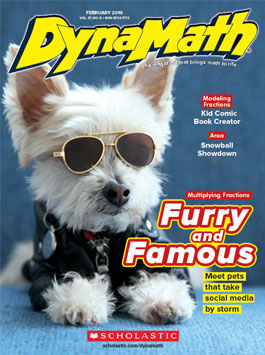How can you solve a division problem if you can’t identify the divisor? Having a good understanding of math vocabulary terms is essential in the elementary years.
That’s why we created Math Goes Extreme, our monthly back page feature, which connects real-world, record-breaking numbers to elementary math concepts and vocabulary.



